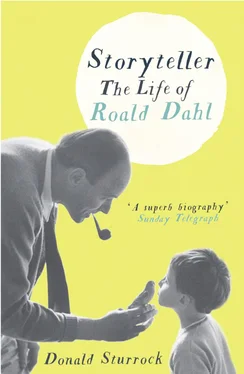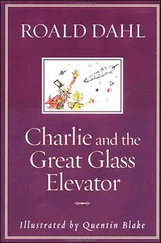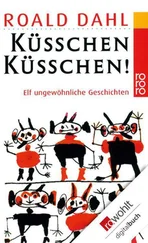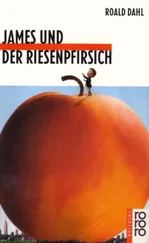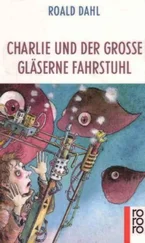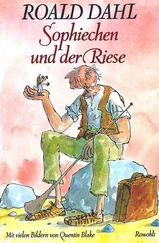1 ...7 8 9 11 12 13 ...18 Following Marie’s death, her mother Ganou came over from Paris to help look after Ellen and Louis. Harald drowned his sorrows in hard work, spending long hours in his office and obsessively tending Villa Marie’s substantial garden. 11Four years passed. Then, one summer, Harald went away to visit his sister Olga, who was now living in Denmark. 12Whether he was lonely and went consciously in search of a new bride, as Roald maintained in his memoir Boy, is uncertain, but it was in Denmark, not Norway, as Roald later claimed, that the Dahls and the Hesselbergs finally connected. Sofie Magdalene Hesselberg, who was visiting friends, had strong, almost masculine features that were in sharp contrast to Marie’s delicate, almost doll-like appearance. Within a matter of weeks she and Harald were engaged.
It was a convenient match for both of them. She was twenty-six years old, sturdy, strong-willed and eager to break the tie with her parents. He was prosperous, established, and old enough to have been her father. Harald however had to overcome strong opposition from Sofie Magdalene’s parents. Karl Laurits and his wife Ellen were by now wealthy in their own right. He was treasurer of the Norwegian Public Service Pension Fund and both were very controlling personalities. Their only son had recently died, and their three daughters were now the focus of their attention. Sofie Magdalene was considered the least attractive of them, and felt herself in some ways the “Cinderella” of the trio. 13Nevertheless Karl Laurits was disconcerted that his eldest wanted to marry a man only ten years younger than he was. Worse still was the fact that she planned to leave Kristiania and live in Wales. But Sofie Magdalene was determined, and her parents were eventually forced to consent grudgingly to the wedding.
Her stubbornness in doing so may also have been farsighted. Ahead of her, she may have seen the fate that would befall Ellen and Astri, her two younger sisters. They failed to escape their father’s thrall and were destined to live out their entire lives in the parental home. Increasingly eccentric, they became a growing source of curiosity and amusement for their younger relations, who remembered them, either drunk or drugged, sitting on the veranda of their home in Josefinegate, like characters in an Ibsen play, methodically picking maggots out of raspberries with a pin. 14
Harald took his new wife to Paris on her honeymoon, kitting her out in the French fashions he adored, and buying her a cape made of black satin that she kept for the rest of her life. They visited his brother Oscar and his wife in La Rochelle, before returning to the Villa Marie. Sofie Magdalene immediately took charge in a manner that was both decisive and somewhat brutal. She turfed the beloved Ganou out of the house, and hired a Norwegian nanny, Birgit, to look after the children. This alienated Ellen and completely traumatized the five-year-old Louis, for whom Ganou had become a surrogate mother. For weeks after she left he would stand at the garden gate looking desperately down Fairwater Road and screaming for her to come back. No longer was French to be spoken at home. From now on, only Norwegian and English were permitted. The sensitive Louis found it hard to cope with these changes and suffered psychologically. Once he appeared on the Dahls’ front doorstep with a classmate who announced to an uncomprehending Sofie Magdalene that the unhappy boy had had “an accident in bags” during a lesson and needed to come home to wash his bottom. Though Louis would in time grow to be fond of his stepmother, these initial experiences caused a fault line between Sofie Magdalene and her stepchildren that would lead to tension later on.
The new bride, however, was deliriously happy in the Villa Marie. Fifty years later she would still describe it as her “dream home” — the place where she had been happiest of all. 15She was soon pregnant and a rejuvenated Harald excitedly insisted that she take a series of “glorious walks” through the surrounding countryside, because he believed these would imbue the unborn child in her womb with a sense of beauty and a love of nature. Within five years Sofie Magdalene had given birth to four children: Astri (1912), Alfhild (1914), §Roald (1916) 16and Else (1917). All four were indeed to manifest a strong artistic leaning and profound love of the countryside, qualities they shared with both their parents. Nevertheless, the idea that these “glorious walks” had somehow influenced their emotional development became deeply ingrained in their psychologies. Astri was Harald’s favourite. A snapshot of him roaring with delight as his one-year-old daughter takes a puff from his pipe is the only photograph to survive that shows him with anything but a sober, almost sombre, countenance. Roald was named after the Norwegian explorer Amundsen, who had successfully reached the South Pole in 1911, and whose nephew, Jens, worked briefly for Aadnesen & Dahl during the war. 17He was his mother’s “pride and joy”, her only boy, and therefore treated with special care. His siblings affectionately dubbed him “the apple of the eye”. 18
The First World War brought the need for registration cards for Harald and Sofie Magdalene, and resentment among some locals that Norway remained neutral throughout the conflict. Harald and Sofie seem to have been immune from this — perhaps because Harald was working so hard to keep the merchant fleet going. His wartime secretary, J. Harry Williams, recalled Harald as a model employer, conscientious, diligent and responsible. He was “my first ideal”, he told Roald. “Nobody has ever come higher in my experience.” 19Alfhild too remembered her father working long hours, coming home tired late in the evenings, and her mother trying to cheer him up with her Norwegian cooking. The war did no harm to his business and, as it prospered, Harald sold Villa Marie in 1917 and bought Ty Mynydd, a large Victorian farmhouse at Radyr, further out of Cardiff, a few stops down the Taff Vale railway. It had 150 acres of land, its own electricity generator, a laundry and a collection of farm outbuildings that included a working piggery. Roald later recalled with nostalgia its grand lawns and terraces, its numerous servants, and the surrounding fields filled with shire horses, hay wagons, pigs, chickens and milking cows. The purchase of the farm even merited an article in the local press, which described Mr Dahl as a man “with many years association with the shipping trade of South Wales” and “prominent in Docks circles”. “His firm is a very large business,” the article concluded, “especially with Norwegian shipowners, whose vessels have continued to trade with the district all through the war.” 20
Harald bought paintings and antique furniture for the new house, and carved wooden picture frames. He collected alpine plants, going out in all weathers to stock the new garden with what he had collected. At one point he also bought his young wife a secondhand De Dion Bouton car, and tried to persuade her to take up driving. It was a mistake. On her way to visit a friend who had just had a baby, she put her foot on the accelerator instead of the brake and crashed the car into a cartload of eggs. When she finally got to her friend’s house, she found that the baby had died. She never drove again. 21At home, Harald was not the easiest of husbands. He could be withdrawn and undemonstrative, sometimes almost cold, as he absorbed himself in his many private interests. Years later, Sofie Magdalene would tell her granddaughter, Lou Pearl, that at times she even felt frightened of him. 22
As 1920 dawned, Harald would have been forgiven for looking back on his life with some satisfaction. He had come a long way since he left his family in Sarpsborg for the delights of bohemian Paris. Business was booming. He had survived the sudden death of his first wife, to find unexpected happiness with Sofie Magdalene. Though he had started his family late — when he was forty — he was now in his mid-fifties and had six happy, healthy multilingual children around him. ¶Two were already at boarding school. His eldest daughter Ellen was at Roedean, a grand English fee-paying school for girls, set high atop a cliff in Sussex overlooking the English Channel, while Louis had just started at nearby Brighton College. If he did not see his younger children as much as he would have liked, he still occasionally found the time to relax and unwind with them — chasing a giggling Alfhild round the dining-room table, for example, while singing Grieg’s Troll Dance at the top of his voice. 23
Читать дальше
